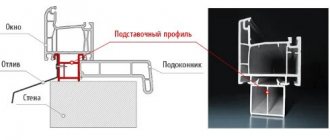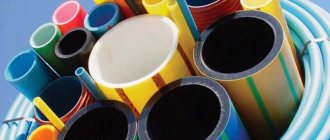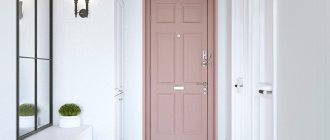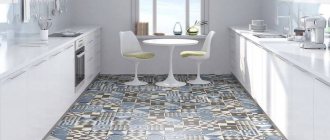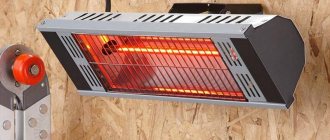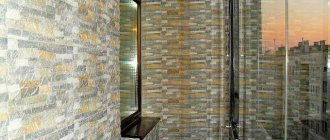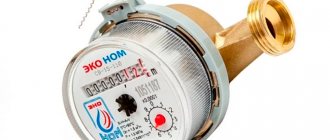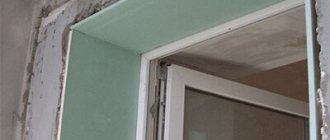Manufacturers popular in the domestic market
To improve their competitive positions, window brands create unique seals for plastic windows. However, there are also universal products in this category on the market. When choosing, in addition to design compatibility, it is necessary to take into account specific operating conditions and owner reviews.
Rehau
Two rubber protrusions for plastic windows increase the reliability of the sealed circuit.
The cavity in the fastening element prevents the formation of a “cold bridge.” This manufacturer (Germany) offers durable silicone seals for plastic windows as standard equipment. Also in the current catalog there are models made of synthetic material EPDM. RUBBERCELL (porous rubber) is used to create products with reduced thermal conductivity.
Veka
Complex combinations of several seals improve the consumer characteristics of window units
Another German manufacturer has been selling similar products for more than four decades. Positive reviews from ordinary consumers and craftsmen confirm the high level of quality, which has successfully stood the test of time.
KBE
This manufacturer from Germany produces a wide range of products. But they are intended only for specific models of window (door) units
Schlegel
The assortment of this brand (Germany) includes products of different colors for entrance doors and windows
Schlegel combined seals are made of foamed polymer with a protective and decorative shell. Built-in fiberglass thread strengthens the structure. Sellers report that such products retain good performance for up to 20 years.
Russian, Obninskgazpolymer, SibrTech and other domestic companies produce seals for plastic windows in a wide range. Some products are compatible with the products of the foreign brands listed above, but are cheaper. When choosing, you should clarify the material, check official guarantees and certificates.
Requirements for the installation seam
Assembly seams of junction units of window and door units are made in accordance with the requirements of GOST 30971-2012 according to design and technological documentation approved in the prescribed manner (clause 5.1.1 of GOST 30971-2012).
Options for constructing an assembly seam according to GOST 30971-2012 are shown in Figure 2.
Figure 2 GOST 30971-2012 - Construction seam option
Conventions used in the figure:
- I - outer waterproofing, vapor-permeable layer;
- II - central heat and sound insulating layer;
- III - internal vapor barrier layer;
- IV - additional water and vapor barrier layer.
Requirements for the dimensions of installation gaps are established in section 5.2 of GOST 30971-2012.
According to clause 5.2.1, the minimum dimensions of installation gaps for window blocks of various designs are taken in accordance with Table 2, Figure 3, as well as from the condition of ensuring the possibility of free thermal expansion of the window block without the occurrence of bending deformations of the profile elements.
Figure 3 GOST 30971-2012 - Location of installation gap
Table 2 GOST 30971-2012 - Installation gap dimensions
Material of profile elements
Overall size of the window block, mm
Installation gap size, mm
2 Aluminum alloys
Advantages and disadvantages of seals made of different materials
Window seals are made from a variety of structurally elastic materials. They differ in appearance, operating features, price and service life. The most common ones are black ones made of rubber - they are inexpensive and do the job well. But there are also multi-colored tapes; they are used with both white and painted or laminated structures.
Before purchasing a new tape, it is recommended to remove part of the old seal and take it to the store for comparison.
Variety of shapes, colors and materials of seals
Rubber
Vulcanized (foamed) rubber tapes are the most popular on the market. They are always black in color because they contain soot. Such seals hold their shape well and are not afraid of ultraviolet radiation and temperature changes. Over time they dry out and crack. In the cold they lose elasticity. Depending on the fillers used, they may have different mechanical strength.
Rubber is the best option for PVC windows
Silicone
The second most popular, but not the best sealant is silicone. It is made from synthetic rubber. The tape can be painted in any shade. It is quite soft, so sometimes it breaks. Elasticity is maintained even in cold weather, so this seal provides high-quality pressure. Does not dry out over time. The material is environmentally friendly.
Reliable but expensive silicone seal
Thermoplastic (TPE)
This seal is made on the basis of a synthetic polymer - thermoplastic elastomer. Capable of repeatedly restoring its original shape. Very elastic and durable. Environmentally friendly. Excellent resistance to environmental influences. Suitable for use in mild climates. The tape is available in various shades.
Thermoplastic seals ideal for warm regions
PVC
Inexpensive PVC sealant is made from the same material as frames, but contains fewer hardeners and more additives to improve ductility. Hardens in the cold. It has low mechanical strength and short service life.
Inexpensive PVC seal
EPDM
These are ethylene-propylene diene monomers of synthetic origin. The sealant itself is produced using organic substances. The material is very strong and durable. Safe for humans and the environment. Not afraid of external influences and mechanical damage. Retains its properties at any temperature. Available in different colors.
Colored EPDM seals are good for painted and laminated windows
Polyurethane
Foamed polyurethane sealant for PVC windows is usually not used, as it is short-lived and quickly loses its shape. But a special tape is produced in a durable shell, intended for plastic structures. It is reinforced with fiberglass. Suitable for most brands of windows. The tape does not require lubrication and does not absorb water. She is not afraid of low temperatures. And the porous structure provides additional thermal insulation.
Foam seal for windows - retains heat and lasts a long time
| Material | Operating temperature, °C | Service life, years | Main disadvantage | Main advantage |
| Rubber | from -40 to +50 | up to 5 | black color, fragility | low cost |
| Silicone | -60 to +150 | 5÷15 | high price | excellent pressure |
| TPE (thermoplastic) | above 0 | in warm climates about 10 | in the cold it completely loses its elasticity, in the heat it softens | high springiness |
| PVC | from -40 to +50 | no more than 5 | low quality | availability |
| EPDM | -60 to +120 | 15÷20 | excellent performance properties | high price, difficult to find in stores |
| Polyurethane | from -60 to +40 | to 10 | Suitable for almost all PVC windows | Made only in Germany |
Installation rules
The correct technology for installing window structures in a brick house is regulated by GOST. This document allows a deviation of no more than 1.5 mm per meter of structure. The assembly seam should be made in three layers. The distance between the fastenings is no more than 70cm. How the structure will be used and how it will behave over the years depends on compliance with the installation technology.
Additional installation rules:
- Polyurethane foam is used regardless of whether the house is panel or brick. It performs several functions - it seals joints, imparts rigidity, insulates, and fixes.
- Polyurethane foams have different parameters, among which the key is the hardening temperature (indicated in the instructions on the package). Craftsmen choose foam according to the season; the purpose (for a brick or panel wall) is not taken into account.
- The foam should be applied in small portions, thanks to this it is possible to work out small cracks more thoroughly and waste less material.
- The gap between the brick and the plastic must be protected from condensation. For this purpose, waterproofing is used on the outside, and vapor barrier on the inside.
- Installation of window structures is possible at any time of the year; it is especially beneficial in cold seasons. The main problems (freezing, fogging, leakage, blowing) are observed in winter and autumn. They can be quickly noticed and eliminated during the cold season.
- An opening in a panel or brick wall may crumble. Correct installation of a plastic window when crumbling is observed begins with strengthening the opening. If the crumbling of the walls continues, cracks will form, which will lead to classic problems in the operation of window structures.
The technology for installing PVC windows in a panel house is generally similar to a brick house; it is important to follow the rules and listen to the advice of professionals
Main materials used in the production of seals
TPE as the strong point of automation of assembly production
Window seal TPE
If you buy a finished window, you can be 75% sure that it uses a TPE seal (an abbreviation for Thermoplaste Elastic - elastic thermoplastic). Russian abbreviation - TEP - thermoelastopolymer. In other words - modified plastic.
And this material is widespread not because it is the best. On the contrary, among modern seals it will have, perhaps, the worst characteristics.
But it is very convenient for automatically assembling profiles. It has a very small corner radius and is welded at the corners of the profile. Its cross-section can be given any complex shape. It can be painted in all the colors of the rainbow. Finally, it is fireproof and relatively cheap. In short, ideal for the manufacturer.
The choice of seal is largely determined by what profile is used for your window. “Review of window brands with plastic profiles” will help you decide on a seal for plastic windows.
Getting to know the Provedal profile design will help you decide on the choice of seal for an aluminum window.
Tips on which seal to use for wooden windows are outlined here: https://oknanagoda.com/okna/uteplenie/uteplit-derevyannye-okna.html
But TPE tolerates temperature changes worse, becomes brittle in the cold and softens excessively in the heat, and is not resistant to mechanical stress and ultraviolet irradiation. He has a large residual deformity.
The TPE window seal can be given any complex shape in cross-section, any color you like
However, you shouldn't discount it. Automation of production is a great thing! You will understand this if you happen to compare windows with a seal installed manually at the beginning of a shift and at the end of a shift.
And if “Uncle Vasya” takes 400 grams during his lunch break to optimize digestion...
And the sophisticated shape of the gasket section, thought out by the profile designers, will help the TPE material cope with mechanical loads when closing and opening the window multiple times, and better keep heat in the apartment.
But, if you don’t like the TPE seal, then even if it is welded at least three times in the corners, a sharp knife and a little perseverance will help you replace it with a different type of “rubber.”
EPDM – as an argument against TPE
EPDM seal
EPDM – ethylene propylene rubber – is considered a worthy replacement for TPE. The Russian abbreviation is a tracing paper from the English EPDM (Ethylene Propylene Diene Monomer).
The complete opposite of TPE: does not change properties at temperatures from -60 to +120 degrees (TPE has temperature limits indicated from -45 to + 80 degrees, but problems can arise starting at temperatures of -20 and below or +35-40 degrees and above) , resistant to cycles of mechanical loads, is not afraid of either ultraviolet radiation or precipitation.
The palm goes to silicone!
Installation of silicone seal
The main disadvantage of EPDM is that there are better seals. For example, silicone (based on silicone rubber). Literally a cut above: temperature range – from – 80 to + 200 degrees.
Due to its special softness, the silicone seal practically does not wear out even with very frequent and tight closure of the sash with the frame. He is not afraid of any natural excesses, including increased levels of ozone in the air and ultraviolet radiation.
Don't forget about rubber!
Rubber seal
And finally, we must not forget about ordinary tires. That is, about vulcanized rubber. It has all the advantages and disadvantages of natural material. Provides good sealing, but can “succumb” to atmospheric and climatic factors. For example, cracking due to sudden and frequent temperature changes.
Much depends on the manufacturer. More precisely, it depends on how much it saves on rubber and what percentage of fillers it uses in the formulation.
Have you thought about high-tech glazing options for your apartment? Read the article “Electrochromic smart smart glass, its features and applications”! Are seals needed for panoramic glazing? Look for the answer in the article on our website! What is the importance of the seal when adjusting the glass unit? Look at the tips of the pros at https://oknanagoda.com/okna/remont/regulirovka.html
The main filler is soot. But don't be afraid that your windows will turn black. This “soot” does not stain. The greater concern is that the sulfur used in the vulcanization process may react with the profile material and leave yellowish marks on it.
Errors in the accuracy of geometric parameters
A very common mistake when ordering and installing products is errors in measurements. Ideally, this procedure is carried out on empty window openings during the construction stage of the building.
In practice, plastic windows are installed as a replacement for old wooden ones. The presence of an installed frame prevents accurate measurements. In turn, this leads to an erroneous geometry of the finished double-glazed window. How can you understand at the installation stage that the measurements are incorrect?
At a minimum, it is worth remembering that the distance between the frame and the wall of the building should be 3-4 cm. In the lower part, such a gap may be larger, taking into account the installation of an external ebb. A distance less than that specified is unacceptable, because in this case the expansion and contraction of the plastic becomes difficult. This occurs due to changes in air temperature: at positive temperatures the frame will increase, and at negative temperatures it will shrink.
The frame has no choice but to rest against the wall. Because of this, curvature occurs and it can deteriorate ahead of time. Sometimes cracks even appear in the glass unit. For the installer, narrow gaps also have disadvantages, because they are quite difficult to fully fill with foam. The empty spaces thus obtained violate the tightness of the seams.
It is important to choose the optimal distance to the wall, because large openings also negatively affect the quality of installation. There is no normal fastening, and the structure turns out to be shaky
Such defects can be corrected in rare cases. If the error is a few centimeters upward, then it is corrected with polyurethane foam. In other situations, it is necessary to order new products.
Consumer properties of profiles that you need to pay attention to
Which profile to choose for PVC windows so that it is warm, quiet, airtight, inaccessible to burglary and, at the same time, not to contact scammers? The main characteristics will help with this.
System width
The first indicator you should pay attention to is the width of the profile structure. It depends on it how warm and cozy it will be in an apartment or wooden house
For consumers who are encountering plastic windows for the first time, it is difficult to understand how the width of the frame and sash affect the comfort in the room. Let's try to explain.
A double-glazed window is installed in the window sash, which consists of several glasses fixed around the perimeter with a PVC profile frame. The air pockets between the glasses are called chambers. In standard windows, there is simply air in them; in the “Premium” segment, inert gas is pumped into the chambers to improve all the characteristics of the double-glazed window.
From school physics lessons we know that air is a poor conductor of heat, and glass with an air pocket is a poor conductor of sound. Therefore, the more cameras in a double-glazed window and, consequently, the number of glasses, the more comfortable it is to stay in the room. Window manufacturers mainly offer the classic version of the profile width - 58 mm, which allows the installation of single-chamber windows. For two cameras a minimum of 70mm is required.
For regions of the Far North with their extreme temperatures, windows with three or even four chambers are offered. But this requires an appropriate profile width: 90 mm for 3 chambers, 110-120 mm for 4. This type of product belongs to the “Premium” class. Due to their heavy weight, such windows are not recommended for installation on balconies and loggias.
Profile width.
Number of profile cameras
The window design has two units with cameras. One is a double-glazed window, which is discussed above. The second is the profile itself. The profile is hollow. To create structural strength, fasten fittings and increase the level of heat and sound insulation, there are partitions inside the profile. The hollow volumes created by them are called chambers. The more there are, the better the performance of the window. The location of the jumpers is calculated mathematically - each of them performs a specific function.
On sale you can find 3-chamber profiles (this is the minimum possible number of cameras) and 7-chamber profiles. The most popular ones are 5-chamber ones. They offer the best combination of price and quality.
It is difficult to check the quality of the samples offered by the company by the installer, but you can pay attention to the little things that will say a lot:
The company logo, date and place of manufacture applied to the protective tape will with a 90% probability confirm the origin of the product;
- The surface texture will also help: for high-quality windows, the surface of the plastic should be perfectly smooth. Graininess indicates the Chinese origin of the product or Russian handicraft production;
- The applied paint should be uniform in color and without streaks.
How the position of the frame is determined
Before installing plastic windows, determine the position of the glass unit in the thickness of the opening. From the street side it should fit one third into the opening. If you break this rule, make sure that the dimensions of the remaining structural elements also correspond to this change.
Before installation, it is also important to determine whether the window sill overlaps the battery (the permissible level of overlap is half the width). If the battery is located deep under the window sill, this can lead to insufficient heating of the room in winter due to heat loss and fogging of windows
In this case, the window sill should extend beyond the opening by 15 cm.
Replacing seals
Let's look at how to replace the narthex seals. They are located on the frame itself (first circuit) and on the window sash (second circuit).
Old seals to be replacedStep one - calculate the amount of sealant. To do this, you can use a soft measuring tape, tape measure or any other measuring tool. We measure the perimeter of the sash and the perimeter of the frame, sum up the indicators and round to the nearest whole number, since profiles are sold by the metre.
Step two - remove the old profile. If it doesn’t come off well, pry it off with a spatula or knife, but so as not to scratch the plastic.
Dismantling works
We clean off the remaining glue. We wash all surfaces very carefully and leave to dry.
The grooves must be thoroughly washed
Step three - insert a new seal into the grooves.
New seal
The pin can be pulled out after removing the decorative casing from the hinge
We don’t cut it into segments first, because the fewer joints, the better. We start work from the middle of the upper part of the frame (or sash).
The seal begins to be inserted from the center
We insert the profile without tension, just snap it into the groove. We carefully make turns in the corners.
The position of the seal and the correct angle
When the seal is inserted, cut it with scissors and glue the joint with quick-drying glue (instant superglue).
Excess trimmed
The joint is glued
Step four - check the installation is correct. We put the sash in place
We close and open the window several times in a row, paying attention to the position of the seal - it should not move or deform. There should be no blowing in the closed position
Step five - if necessary, apply silicone grease (you can buy it in departments that sell car parts). Distribute it evenly over the surface of the profile and wipe off the excess with a napkin.
Applying Lubricant
Errors in the angle of inclination of a plastic window
The glass unit is mounted strictly vertically. It is almost impossible to visually understand whether the elements are positioned correctly. The average person notices only significant deviations from the norm. But when installing PVC windows, any tilt violations, even 1-2 degrees, are unacceptable.
To ensure the correct position of the structure, a special tool is used - a building level. In appearance, it resembles a large ruler with flasks with air bubbles.
To assess the evenness of the surface, a level is applied to the frame. The bubble should be exactly in the middle. If it moves to any side, then the frame is skewed.
To assess the level vertical position, apply the ruler to the corresponding surface and look at the central bulb on the ruler. The principle is the same - the bubble should occupy a middle position.
Window installation requires compliance with three levels:
- Horizontal position.
- Verticality.
- No inclination of the glass unit in or out of the room. To do this, apply a ruler to the inside of the structure vertically.
You can check the correct installation experimentally. To do this, open the window in any way - completely or in the form of a window. If the sash does not change its position and remains static, then the window is installed strictly vertically. If the window closes or swings open without outside help, then we can talk about tilting.
Measurements are usually carried out by installers. The customer can simply come up and personally look at the position of the building level bubble.
Errors in the slopes of frames and double-glazed windows at first glance seem to be an insignificant factor. But it is important to know that in the future such a structure will warp, and problems will arise with opening and closing the window.
Installing and replacing seals in wooden windows
It is somewhat more difficult to improve the performance characteristics of windows made of wood than plastic ones. Especially many problems arise when it comes to insulating old wooden windows, however, this problem can also be solved. First, you need to determine why a wooden window loses its performance characteristics:
- The frame and sashes are made of raw, untreated wood, which deforms very quickly, which, in turn, breaks the tightness of the window.
- The window is made from solid blocks of wood. In this case, the weakest point of the structure will be increased humidity, which will inevitably deform the frame.
- The window is insulated only with glazing beads, without the use of modern rubber seals.
If the seal is replaced in a timely manner, wooden windows will last longer.
The correct wooden double-glazed window must be made of laminated wood, which has been specially dried and vacuum impregnated. Such wood can withstand temperature changes and humidity, and a window made from it can last 40-60 years.
Wooden windows are insulated in the same way as plastic ones - using modern sealing materials. For wood, it is better to choose options made from rubber or PVC; the latter cope well with cold weather, and the former are more profitable to use if you live in a warm climate. The sealing gaskets are attached using silicone sealant; it is better not to use self-adhesive options for wooden frames, as they can come off during the cold season.
The best option for insulating a window frame is a tubular profile. Despite the fact that it is intended for plastic windows, you can buy this type of rubber seal for wooden ones, and its performance characteristics are highly wear-resistant and durable. The service life of a tubular profile, subject to proper care, is 5-6 years, while it looks aesthetically pleasing and is easy to install.
Wide seals are better for wooden windows
The following materials can also be used to insulate a wooden window:
- Felt tape with PVC coating, which is mounted on the lower part of the window sash and provides reliable protection against drafts.
- A sponge gasket, which is mounted in the same way as the previous option and also effectively copes with heat loss.
- Ordinary polystyrene foam is good because it has a fairly low cost, but it quickly breaks down.
- Foam seal with special coating. It insulates windows better than polystyrene foam, but cannot boast of a long service life.
- Metal spacers are strips of stainless steel or bronze that are used to seal gaps between the window frame and frame. To use such strips effectively, it is necessary that the inside surface of the box is absolutely flat.
- Construction tape is the simplest and cheapest, but also the most inconvenient option. The adhesive tape can come off due to the flow of cold air, and it will simply be impossible to open window sashes with such insulation.
When using reliable seals, condensation will not damage the wooden frame
Procedure for installing seals in wooden windows
If you need high-quality insulation and sound insulation of a wooden double-glazed window, then the work must be carried out in the following order:
- Future installation sites for gaskets are thoroughly cleaned of paint, dust and dirt. It is strongly recommended to degrease the surface before proceeding with the installation of the seal. This can be done with alcohol or solvent.
- The gap between the sashes and the frame is studied and measured. This is done in order to determine the thickness of the seal that will not interfere with closing the window.
- If the thickness of the gap is not enough, then make the groove for the seal yourself. If the required distance between the sashes is present, then you can begin installing the gasket.
- The edges of the gasket can be secured with small nails for greater sealing efficiency.
The result of this work will be windows that will effectively protect your home from the penetration of noise, dust and cold air. The main thing to remember is that if your wooden window has served for decades, then it may be easier and cheaper to buy a new one instead, rather than try to restore the old one.
There are different types of rubber gaskets for different types of windows.
How is installation done?
The spacers necessary to adjust and fix the required gap are inserted into the opening. The profile is aligned in the opening using a level and the specified spacers - for this, the wedges move horizontally and vertically. After leveling, you need to mark the points in the wall where the fasteners will be located. The profile is removed, holes are made in the wall using a suitable tool.
Then it returns to the selected and adjusted position, and the fasteners only slightly secure it (it is not turned completely), the alignment accuracy is checked, the bolts are finally screwed in (the amount of protrusion of the bolt cap is no more than 1 mm). When the frame is fixed, the sashes/glazed windows are inserted, the entire structure is checked, adjusted and adjusted.
After completing the main installation, all that remains is to install the plastic slopes and window sill. Before installation, all surfaces used must be leveled and clean. To cut and fit slopes and plastic window sills, you will need a power tool.
First, the upper horizontal is mounted, it is recessed deep, and the space is filled with polyurethane foam (a little, since after hardening it can damage the loose structure of the slope)
The second step is to install the vertical slopes (it is important to use a level), and then the lower one. All elements must be correctly joined so that there are no gaps between them
After installation, the corners are closed with special corners.
What does the structure consist of?
Despite the variety of brands, each of which describes the product in its own way, the PVC profile window system consists of the same components. Externally, the design looks simple: a plastic frame, transparent windows, neat handles.
PVC window design
All the beauty is hidden inside - if you look at the section of the panel, you will see a cellular structure made of plastic partitions, a metal frame, grooves for sealing rubber, and the glass unit itself consists of several layers.
Let's take a closer look at all the components of the design:
- Profile
- Double-glazed window
- Accessories
Frame
Internal cellular structure
This is a plastic box inside which all the mechanisms are located. It consists of a frame (fixed part) and a sash (moving part). It comes in different shapes: round, square, rectangular, with beveled corners.
Inside the profile there is a durable metal frame. Reinforcement gives the structure rigidity and stability. It can be closed or U-shaped (the first is preferable).
The profile itself has thick walls, and inside it is filled with jumpers that form honeycombs or cells. They form air chambers, which perform a thermal insulation function. The more cameras in a row, the warmer the window will be.
Please note that if a manager recommends, for example, a five-chamber double-glazed window, he means the number of cameras in the profile.
There are grooves in the plastic into which the seal is inserted: it presses the double-glazed window and prevents blowing, wind, rain, and dust from entering. Made from synthetic or vulcanized rubber. There are seals made of elastic thermoplastic.
Double-glazed window
Single chamber glass block
These are glass layers that are connected to each other. Between them there is a frame with an air gap, and heat-reflecting coating is applied to one of the glasses. In winter, it helps to retain heat inside the room, and in summer it does not allow intense heat from the street to pass through.
The package can be single-chamber or double-chamber. The first consists of two glasses and one air cavity, the second of three glasses and two air pockets. For residential premises, it is recommended to purchase double-glazed windows - they are more airtight and warmer.

